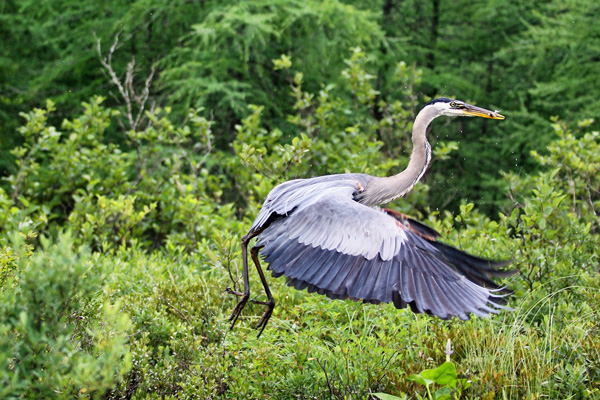
A team of researchers believe that Quebec’s protected areas are poised to become biodiversity refuges of continental importance. They used ecological niche modelling to calculate potential changes in the presence of 529 species in about 1/3 of the protected areas in southern Quebec almost all of which were under 50 km2 in size.
Their results suggest that fifty to eighty years from now (between 2071–2100) close to half of the protected regions of southern Quebec may see a species turnover of greater than 80 per cent. The research team, from l’Université du Québec à Rimouski, le Ministère des Forêts, de la Faune et des Parcs, and McGill believe that, depending on the region, the gain in the number of species of birds, amphibians, trees, and vascular flowering plants could range from 12 and 530 per cent. It is the first study to examine in such details the potential effects of climate change on the biodiversity of a large network of northern protected areas.
A need to rethink conservation paradigms?
The researchers believe that the scale and rapidity of the species turnover will also result in a necessary reexamination of current conservation paradigms, since it will be impossible to preserve a snapshot of today’s biodiversity in the National Parks. More specifically, the researchers believe that:
- Rather than trying to preserve current biodiversity in the National Parks, a more effective conservation strategy to ensure future biodiversity may be to preserve site resilience and a diversity of physical features and conditions.
- There will potentially be complicated choices ahead for managers of protected areas as increasing numbers of new immigrant species colonize protected sites. If historical communities are deeply modified, the managers may need self-sustaining populations of non-native species in some protected areas. But newly arriving species may also have negative impacts on ecosystem structure and function.
- Assigning conservation status to rare and recently naturalized species may prove a thorny issue, given that a significant portion of northern species are already at risk. But the conservation value of rare new species should be considered in a long-term continental perspective rather than short-term national perspective.
- It will be important to preserve and restore connectivity of protected areas to allow potential corridors for migration. In this way, species will avoid being trapped for decades or centuries between rapid retreat from the territory’s southern edge and only a slow advance on the northern edge.
The researchers caution, however, that potential species gains should not draw attention away from the potential extinction of local species that may no longer find suitable conditions in future in the protected areas where they are at the moment. The geographical pattern of potential relative species loss suggests that several species could disappear in both the southernmost protected areas of Quebec, and in the higher latitudes, where the extinction of only a few local species can have drastic effects on whole ecological communities.
Read the full article Northern protected areas will become important refuges for biodiversity tracking suitable climates online.
